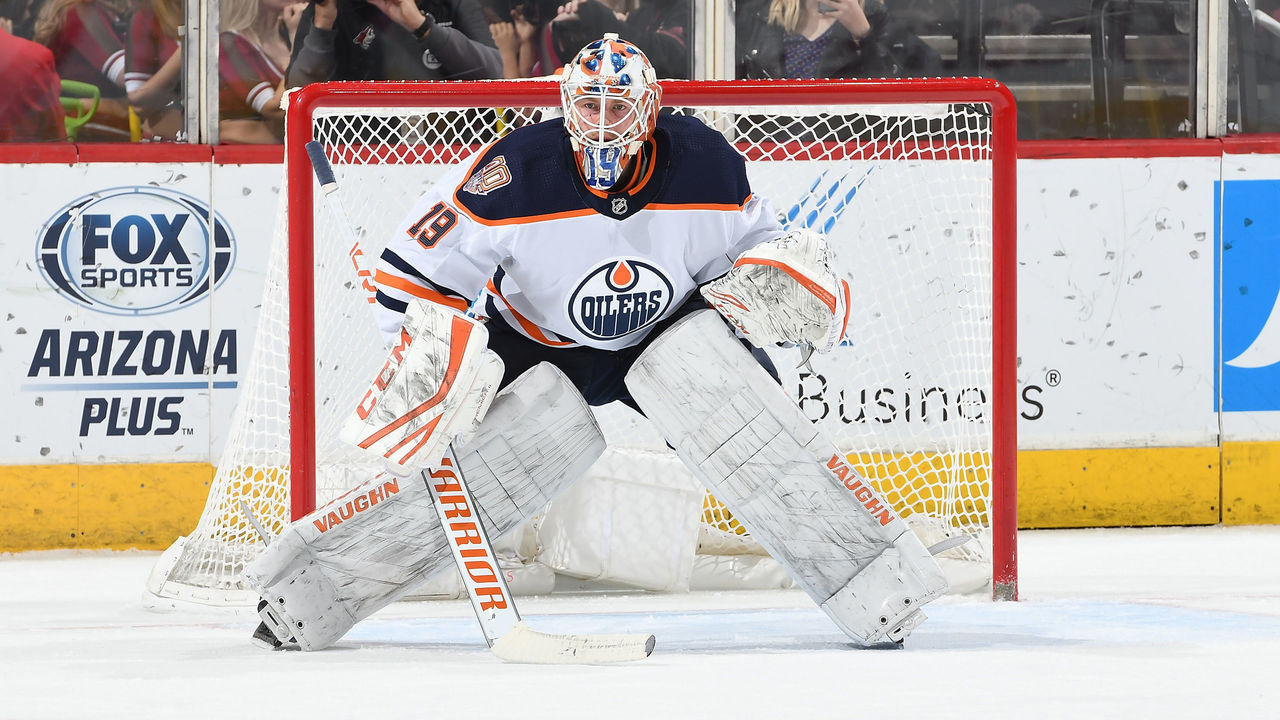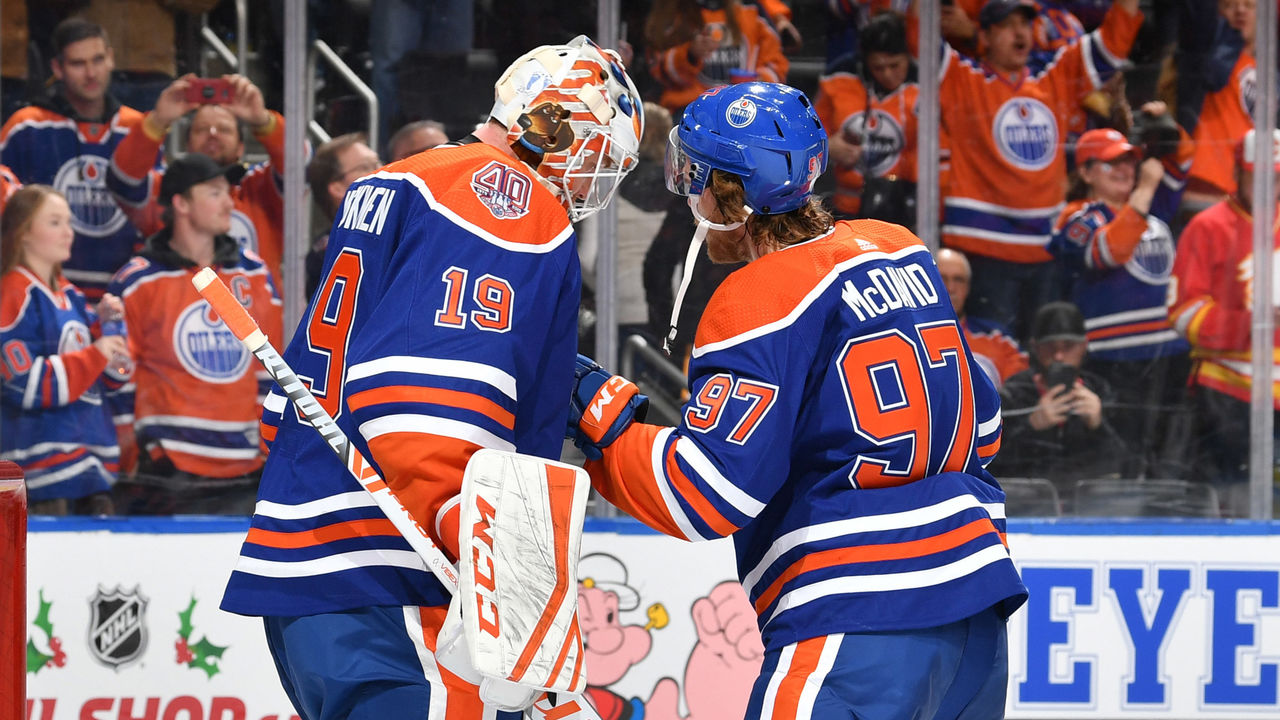Koskinen extension compounds Oilers' cap issues, mediocrity in net
The Edmonton Oilers handed a three-year, $13.5-million contract extension to goaltender Mikko Koskinen on Monday - and all indications suggest this was an unnecessary overpay by general manager Peter Chiarelli.
A second-round pick by the New York Islanders in 2009, Koskinen joined the Oilers on a one-year, $2.5-million deal last offseason after spending the preceding nine years in the KHL. He's become Edmonton's No. 1 netminder, largely due to the struggles of Cam Talbot.
The 30-year-old Koskinen's been inconsistent in his first season in North America in nearly a decade. He owns a .911 save percentage and a 2.78 goals-against average in 27 games, and he enjoyed a hot streak shortly after Ken Hitchcock replaced Todd McLellan as Oilers head coach. However, in his last 11 appearances, he's gone 3-7-0 with an .879 save percentage.
Given his recent struggles, why extend Koskinen at all, let alone now?
Talbot is a pending unrestricted free agent after this season and doesn't appear to be in Edmonton's plans. The franchise likely wanted to assure itself of having an NHL netminder signed beyond this season. Extending Koskinen to do so, though, compounds the Oilers' long-standing mediocrity in the crease and makes their salary-cap situation that much more hairy.
What's Koskinen worth?

Koskinen's $4.5-million cap hit makes him the 17th-highest paid goalie for next season. Once some of the league's pending unrestricted and restricted free-agent goalies sign new deals, he'll likely be bumped into the low 20s. Still, the Oilers are paying Koskinen mid-to-low-tier starter money. The problem is, he hasn't proven to be capable in that role.
If any single stat is best for evaluating a goalie, it's goals saved above average (GSAA), which Corsica Hockey explains as "goals allowed below the expectation based on shot danger faced." Koskinen's 0.44 GSAA ranks 27th in the NHL among goalies with at least 500 minutes of ice time.
Using Cap Friendly's comparable contracts tool, the best match for Koskinen's extension is Arizona Coyotes goaltender Antti Raanta's three-year pact with a $4.25-million cap hit, which he signed in April 2018.
However, Raanta was 28 years old when that contract was signed, had 124 NHL starts under his belt, and was coming off a season where he ranked seventh in the league with a 19.95 GSAA.
If the Oilers were eager to extend Koskinen this season, something in the neighborhood of Carter Hutton's deal with the Buffalo Sabres - three years with a $2.75-million cap hit - would've been more appropriate.
What does it mean for the Oilers?

The Oilers project to have $6.5 million in cap space next season after committing to Koskinen. This projection doesn't include pending RFAs Tobias Rieder, Jesse Puljujarvi, Ty Rattie, and Jujhar Khaira, or pending UFAs Alex Chiasson, Kevin Gravel, and Alex Petrovic. Even if the Oilers wanted to retain just three of those six players - let's say Puljujarvi, Chiasson, and Petrovic - that would conservatively cost them around $4 million, leaving them with just $2.5 million in cap space and plenty of holes on the roster.
There's no reason the Oilers couldn't have rode out the season with Koskinen's expiring deal. If he excelled, they could've likely retained him for a similar price. Alternatively, they could've explored this summer's goaltending free-agent market, which features several unspectacular but solid, affordable veterans with better track records than Koskinen.
Edmonton took a major risk by investing $4.5 million annually in a goaltender who hasn't proved he can solve the team's issues in net. The lack of cap space means the Oilers will now essentially sink or swim with Koskinen as "the guy" between the pipes over the next few seasons - and that's less than ideal during Connor McDavid's prime years.